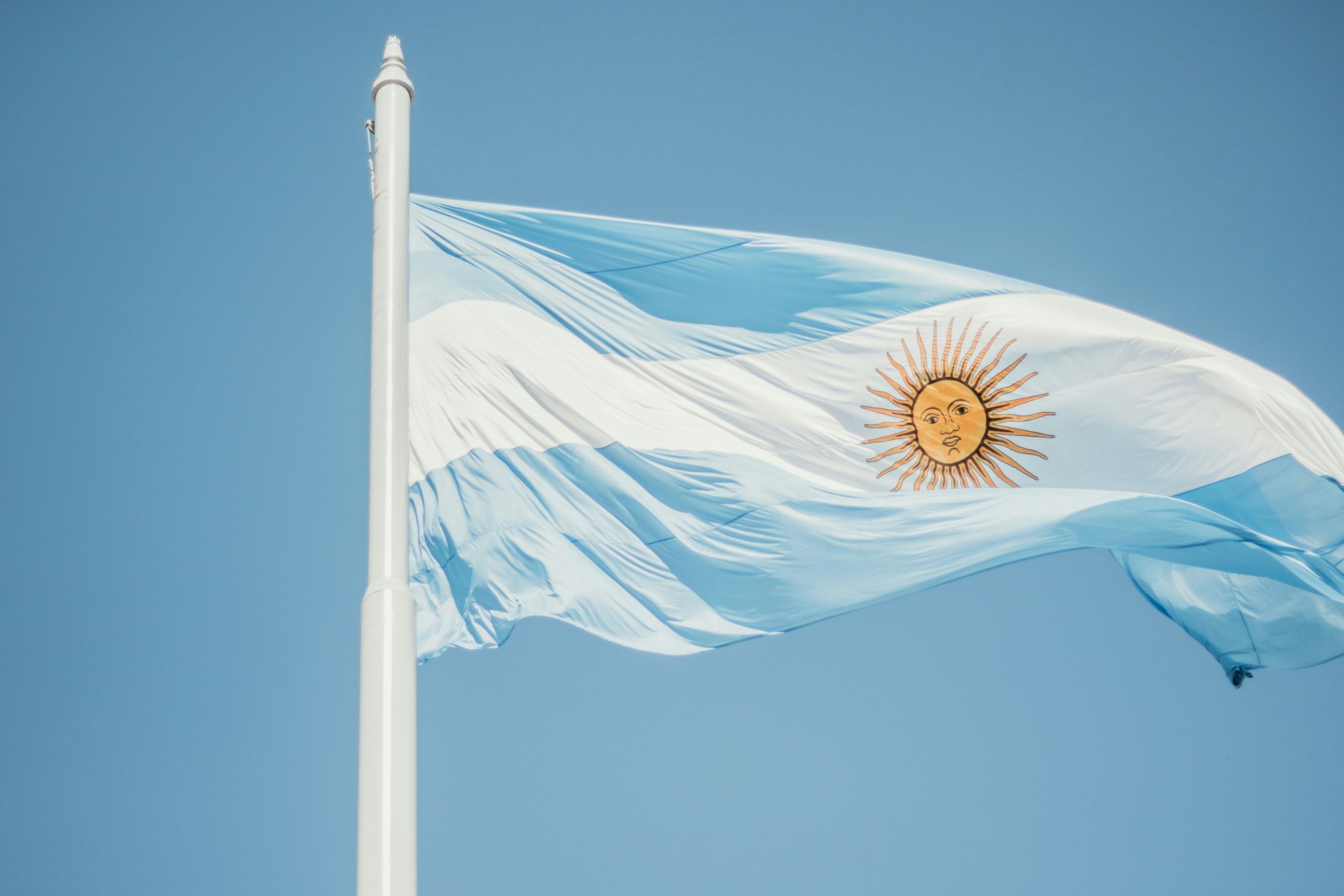
A global example of memory, truth and justice: the Dossier on the evolution of sentences handed down in Argentina in trials for crimes against humanity prepared by the Office of the Prosecutor for Crimes against Humanity
“It is necessary to shield the Never Again, as an input for democracy, because violence is the hydra with a thousand heads”. Jorge Auat. Former General Prosecutor of the Prosecutor’s Office for Crimes against Humanity.
The Prosecutor’s Office for Crimes against Humanity (PCCH) was created in 2007, as an institutional policy of the Attorney General’s Office, with the purpose of starting one of the most important processes of reconstruction of historical memory at national and international level. Let us remember that Argentina suffered a civil-military dictatorship between 1976 and 1983, which implied, broadly speaking, the violation of fundamental rights such as life, physical integrity and freedom, the disappearance of more than 30,000 people and the appropriation of approximately 500 children.
Initially, the objectives of the PCCH were focused on the monitoring and coordination of all the cases of crimes against humanity under investigation in the country, a task that meant the certification of the status of the files, the development of legal strategies taking into account the particularities of each case, as well as the development of a purely technical work that involved studying national and international doctrine and jurisprudence to then apply those criteria in the investigations.
At the same time, the reopening of the trials in Argentina made visible the ideological position of a conservative sector of the Judiciary that was opposed to the prosecution of these facts, therefore, the PCCH also played a role of political “articulator” to prevent the advance of a denialist position that hindered the progress of these cases.
Likewise, the PCCH established links with the victims, especially with the Human Rights Organizations, who were always recognized as the real “driving force” in the progress of these cases, since thanks to their tireless demands for memory, truth and justice, they managed to generate a social consensus that “never again” similar events could occur.
Finally, we must highlight the role of recording and systematizing case data to prepare reports and statistics that facilitate the detection of obstacles and allow the development of criminal policy strategies.
And from this last task, the preparation of the Dossier of sentences pronounced in trials of crimes against humanity in Argentina between 2006 and 2023, which brings together 312 sentences with a brief summary indicating the number of victims who were part of the case, the number of those sentenced, the territory where the debate took place, some relevant aspects of the trial and a link to access the full sentence.
Considering the magnitude and richness of this report, the intention of this opinion article is simply to highlight strategies for investigating crimes against humanity with respect to evidence gathering, and legal issues related to the possibility of expanding the criminal definitions applicable to crimes against humanity. Let us see.
Although the organization of cases by territoriality criteria (e.g., by province) could be a good starting point, in the case of Argentina, other unification parameters were used that proved to be extremely effective in the collection of evidence.
One of them was the grouping by Clandestine Detention Center or Repressive Circuit (e.g. see “ESMA”, “Campo de Mayo”, “Circuito Atlético-Banco-Olimpo”, “Circuito Camps”, “La Perla”). This unification allowed the use of common evidence regarding the operation of the clandestine center, conditions of detention, persons in charge, method of torture, etc.
Another strategy was to accumulate the cases by historical/political facts (e.g. see “Contraofensiva” “Condor Plan” -illegal association established between the dictatorships of Argentina, Brazil, Paraguay, Uruguay, Chile and Bolivia-) or extermination modality (e.g. see “Massacre of “Fátima”, “Margarita Belén Massacre”, “Palomitas”). See “Massacre of “Fátima”, “Margarita Belén Massacre” “Palomitas”), highlighting the well-known “Death Flights” by means of which the Armed Forces periodically organized clandestine flights whose mission was to throw the detainees-disappeared, in most cases still alive, into the river or the sea (e.g. See “ESMA Unified” “Campo de Mayo – Flights”).
Another repressive phenomenon that was also unified was the appropriation of children during the civil-military dictatorship. At the beginning, each case was judged individually (e.g. see “Rei”, “Alonso”, “Vildoza”), but later a mega-trial called “Systematic Plan for the appropriation of minors” was carried out, in which Justice proved the existence of a “systematic and generalized practice of abduction, retention and concealment of minors”.
Another criterion was to group cases that occurred before the beginning of the military coup in 1976 (e.g. see “Trelew Massacre” that occurred in 1972, or “Musa Azar” “Capilla del Rosario I Massacre”, “Triple A” “Operativo Independencia”).
On the other hand, cases can also be joined taking into account the power structures responsible for the facts, for example, the Armed Forces or the Police, task forces (e.g., “UP1”, “CICIG”, “CICIG”, “CICIG”, “CICIG”, “CICIG”). See “UP1”, “Cittadini”, “Armada”, “Acumulada Mar del Plata”), as well as the criminal liability of passive subjects outside the Armed Forces: Judicial officials (“Brusa” “Manlio Torcuato Martínez” “CNU -Demarchi-” “Megacausa Juicio” a los Jueces” “Causa de los Magistrados” “Funcionarios judiciales San Luis” “Mazzoni” “Lona” “Caballero Vidal”), members of the Catholic Church (“Von Wernich”), doctors (“Magnacco” “Plan Sistemático de Apropiación de Menores II”, “Torrealday ) and businessmen (“La Veloz del Norte” “Ford”).
However, another fundamental strategy in the advancement of these trials was the expansion of criminal offenses applicable to cases against humanity, that is, in general terms, in order for a crime committed during the dictatorship to be considered a crime against humanity and to be tried, it must be proven that it was committed as part of a systematic and widespread plan of repression; therefore, if a crime is committed and cannot be “connected” to the repressive apparatus, it is considered an isolated act that is not considered a crime against humanity and, consequently, cannot be investigated. For example, there is no doubt that kidnappings, torture and homicides were generalized practices of the dictatorship; however, as we will see below, there are other crimes, such as sexual crimes, which were included in this category at a later date.
In 2010, in the “Barco” case, it was considered, for the first time, that sexual crimes committed against victims of State terrorism are a crime against humanity, although it was still subsumed to the crime of torment. However, that same year, in the “Molina” trial, this crime was considered an autonomous criminal offense, and it was stated that the rapes “did not constitute isolated or occasional acts, but were part of the practices carried out within a systematic and generalized plan of repression carried out by the Armed Forces during the last military dictatorship” (see also “Campo de Mayo case – Sexual Crimes”, “ESMA – Sexual Crimes”). Subsequently, in the “Vesubio III” debate, the Court went a step further and declared that the sexual violence perpetrated against women “was specific, systematic and planned” and that “it was based on gender stereotypes and deepened them, exhibiting a widespread character and with a clear disciplinary objective”.
In another direction, convictions were also obtained for the crime of property theft (e.g. see “ESMA II”, “Zuñiga”), or torment followed by death and application of the crime of abortion (“Suppo”), imputation of the crime of homicide without the victim’s body being found (“Vesubio II”), or convictions using the crime of genocide (“Feced III”, “Ejército – Triple A”, “La Liguria”, “Hogar Belén”, “Benavides”).
Finally, I would like to point out that efficiency in the collection of evidence and in the expansion of criminal types also means a great benefit for the victims: it reduces their chances of being revictimized, strengthens their story by being integrated with other evidence, and in terms of the legal aspect, they find a fair and equitable response to the suffering that has occurred. Suffering torment is not the same as suffering rape, since the legal rights affected are different.
As for the importance of reparation for the victims, in the “Toledo de Ygel” judgment, the court also ordered the Argentine State to pay the victims compensation for the dispossession of their lands, and in the “Armada” judgment, it ordered that the verdict be published in the newspaper La Nueva Provincia, together with a rectification that makes it clear that the disappearances were the result of execution or shooting and NOT of confrontations, and that a memorial site be established where the clandestine center operated (see also “Hogar Belén”, “Megacausa IV”).
In conclusion: the preparation of these reports gives us the possibility to measure and disseminate the magnitude of the events that occurred, to study effective strategies for the prosecution of crimes against humanity, and to constitute a source of reference for cross-referencing data.
Each sentence is more than a legal document, it is the voice of the victims recounting what happened and is one more chapter in the construction of our democratic memory, only in this way can we guarantee the so valuable “NEVER AGAIN”.
Belén Ravarini, FIBGAR collaborator and former member of the Prosecutor’s Office for Crimes against Humanity.



